State pension plans, particularly those for public employees like teachers, firefighters, and government workers, are subject to various federal regulations, including IRS rules and other federal laws, to ensure compliance with tax, nondiscrimination, and retirement benefit standards. These rules apply because state pensions often receive tax advantages (e.g., tax-deferred contributions) and may opt out of Social Security; therefore, they must align with federal standards to maintain their tax-qualified status or avoid penalties. Below are detailed examples of how state pensions fall under IRS rules and other federal regulations, with a focus on key provisions and their implications.
1. IRS Rules Governing State Pensions
The Internal Revenue Service (IRS) oversees tax-qualified retirement plans, including state pension plans, under the Internal Revenue Code (IRC). These rules ensure that plans meet nondiscrimination, funding, and benefit adequacy standards, especially for plans that replace Social Security coverage. Here are specific examples:
A. Safe Harbor Provision (IRC Section 401(a)(4) and 3121(b)(7)(F))
-
What It Is: The Safe Harbor provision allows state pension plans to opt out of Social Security coverage (under Section 218 agreements) if they provide benefits that are "at least as generous" as Social Security. This is tested by ensuring the pension replaces a certain percentage of pre-retirement income (typically 40-50% of average earnings up to the Social Security wage base, e.g., $168,600 in 2024).
-
Example: In Illinois, the Tier 2 pension system (for public employees hired after January 1, 2011) was found to violate Safe Harbor because its pensionable salary cap ($115,000 initially) and benefit formulas provided lower benefits than Social Security for some workers. For instance, a teacher with 30 years of service might receive a pension that replaces only 30% of their income, which is below Social Security’s replacement ratio. To comply, Illinois passed laws (e.g., Public Act 101-0610 in 2020 and Senate Bill 1678 in 2025) to raise salary caps to the Social Security wage base and enhance benefits, thereby avoiding IRS penalties, such as retroactive Social Security contributions (potentially billions for the state).
-
Impact: Non-compliance risks loss of the plan’s tax-qualified status, forcing employers and employees to pay back Social Security taxes plus interest, and potentially disqualifying plan contributions from tax deferral.
B. Nondiscrimination Rules (IRC Section 401(a)(4))
-
What It Is: State pension plans must not discriminate in favor of highly compensated employees (HCEs, defined as earning above a threshold, e.g., $170,000 in 2025). Benefits, contributions, or plan features must be uniformly available to all participants.
-
Example: A state pension plan offering enhanced benefits (e.g., higher accrual rates) only to senior administrators or elected officials could violate nondiscrimination rules. For instance, if a California public pension plan provided a 3% per year benefit accrual for executives but only 2% for rank-and-file teachers, the IRS could deem it discriminatory unless it meets Safe Harbor or other testing requirements. States must design plans or use Safe Harbor formulas (e.g., a defined benefit plan providing 1.5% of final average pay per year of service) to comply automatically.
-
Impact: Failure to comply could lead to plan disqualification, loss of tax-deferred status, and immediate taxation of benefits for participants.
C. Minimum Distribution Requirements (IRC Section 401(a)(9))
-
What It Is: State pensions must comply with Required Minimum Distribution (RMD) rules, mandating distributions to retirees by age 73 (as of 2025) to prevent tax-deferred accounts from being used as perpetual tax shelters.
-
Example: A state pension plan in Ohio must ensure that a retired teacher begins receiving pension payments by April 1 of the year following their 73rd birthday, or the plan risks IRS penalties. If the plan allows participants to defer benefits indefinitely, it could violate RMD rules, leading to a 50% excise tax on undistributed amounts.
-
Impact: States must structure pension payouts (e.g., annuities or lump sums) to meet RMD deadlines, affecting plan design and administration.
D. Contribution and Benefit Limits (IRC Sections 415 and 401(a)(17))
-
What It Is: The IRS sets limits on annual pension contributions and benefits to prevent excessive tax-deferred savings. For 2025, the annual benefit limit for defined benefit plans is $275,000, and the compensation limit for calculating benefits is $345,000.
-
Example: In Texas, the Teacher Retirement System (TRS) must cap pension benefits so that no retiree receives more than $275,000 annually from the plan, regardless of years of service or salary. If a high-earning superintendent’s pension formula would yield $300,000/year, the plan must reduce itOJ the benefit to $275,000 to comply with Section 415. Similarly, only the first $345,000 of a participant’s salary can be used for benefit calculations.
-
Impact: States must adjust pension formulas to avoid exceeding these limits, which can complicate benefit calculations for high earners.
2. Other Federal Rules Governing State Pensions
Beyond IRS rules, state pensions are subject to federal laws that regulate employment, retirement, and fiduciary responsibilities. Here are key examples:
A. Employee Retirement Income Security Act (ERISA) Exemptions
-
What It Is: ERISA (1974) sets standards for private-sector pension plans, including fiduciary duties, vesting schedules, and participant protections. State pension plans are generally exempt from ERISA as governmental plans (29 U.S.C. § 1003(b)), but they must still comply with certain federal standards to maintain tax-qualified status under the IRC.
-
Example: While ERISA doesn’t directly apply, state plans must align with IRS rules (e.g., Section 401(a)) to ensure tax advantages, and some states voluntarily adopt ERISA-like fiduciary standards. For instance, the trustees of a New York state pension fund must act as fiduciaries, ensuring the prudent investment of plan assets, similar to ERISA’s requirements, to avoid legal challenges under federal tax law.
-
Impact: Non-compliance with fiduciary-like standards could lead to IRS scrutiny or loss of tax-qualified status, affecting participant tax benefits.
B. Social Security Act Section 218 Agreements
-
What It Is: Section 218 of the Social Security Act allows state and local governments to opt out of Social Security coverage for employees if they provide a qualifying pension plan (often tied to Safe Harbor rules). These agreements are regulated by the Social Security Administration (SSA) and the IRS.
-
Example: In states like Illinois and California, public employees, such as teachers, are often covered by state pensions (e.g., CalSTRS, TRS) instead of Social Security under Section 218 agreements. These plans must meet Safe Harbor standards (see above) to avoid mandatory Social Security enrollment. For instance, Illinois’ Tier 2 pension reforms (2020, 2025) were driven by SSA and IRS oversight to ensure compliance with federal benefit adequacy requirements.
-
Impact: Failure to meet Section 218 requirements could force states to enroll employees in Social Security, incurring significant costs (e.g., 6.2% employer contributions per employee).
C. Age Discrimination in Employment Act (ADEA)
-
What It Is: The ADEA (1967) prohibits discrimination based on age in employment benefits, including pensions. State pension plans must ensure that benefit structures do not discriminate against older or younger workers in ways that violate federal law.
-
Example: A state pension plan that reduces benefits for employees hired after a certain age (e.g., age 50) may face ADEA challenges unless it is actuarially justified. For instance, a Missouri pension plan that offered lower accrual rates to older hires was challenged in court for ADEA violations, necessitating adjustments to the plan to comply with federal law.
-
Impact: States must design pension formulas to avoid age-based disparities, ensuring compliance with federal employment laws.
D. Affordable Care Act (ACA) Cadillac Tax (Repealed but Relevant Context)
-
What It Was: The ACA’s Cadillac Tax (repealed in 2019) imposed a 40% excise tax on high-cost employer-sponsored health plans, which could include retiree health benefits tied to state pensions. While repealed, it illustrates how federal health care laws can impact pension-related benefits.
-
Example: Before its repeal, states like Michigan had to assess whether their pension plans’ retiree health benefits (e.g., premium subsidies) exceeded the ACA’s cost thresholds (e.g., $10,200 for individual coverage in 2018). Plans exceeding this faced potential taxes, prompting some states to shift to less costly health benefits.
-
Impact: Similar future federal regulations could impose taxes or restrictions on state pension plans’ ancillary benefits, requiring compliance adjustments.
Practical Implications for States
-
Compliance Costs: States must invest in actuarial studies, legal reviews, and administrative systems to ensure compliance with IRS and federal rules. For example, Illinois’ 2025 pension reserve fund ($75 million) was created to address Safe Harbor shortfalls, reflecting the financial burden of compliance with these requirements.
-
Plan Design Constraints: Federal rules limit flexibility in pension design. For instance, states cannot offer overly generous benefits to high earners without violating nondiscrimination rules, or provide inadequate benefits without violating the Safe Harbor provision.
-
Penalties for Non-Compliance: Failure to comply with IRS rules (e.g., Safe Harbor, RMD) can result in plan disqualification, retroactive taxes, or forced Social Security enrollment. Failure to comply with other federal laws (e.g., ADEA) can lead to lawsuits or federal enforcement actions.
Specific Example: Illinois and Safe Harbor
Illinois’ Tier 2 pension system illustrates multiple federal rule impacts:
-
Safe Harbor Violation: The initial Tier 2 design (2011) capped pensionable salaries too low, risking Safe Harbor non-compliance. The state passed Public Act 101-0610 (2020) to raise caps and benefits, citing IRS rules to avoid retroactive Social Security costs.
-
Section 218 Agreement: Illinois’ opt-out from Social Security for teachers and other public employees requires ongoing compliance with federal Safe Harbor standards, monitored by the SSA and IRS.
-
Section 415 Limits: The Teachers’ Retirement System (TRS) caps benefits at $275,000/year (2025 limit) to comply with IRC Section 415, affecting high-earning administrators.
Sources
-
IRS: Internal Revenue Code Sections 401(a), 415, 3121(b)(7)(F); IRS Publication 963 (Federal-State Reference Guide).
-
Social Security Administration: Section 218 agreements; WEP/GPO repeal details (H.R. 82, 2025).
-
Illinois Policy Institute: Reports on Tier 2 pension reforms (2020-2025).
-
Congress.gov: Legislative texts for ERISA, ADEA, and related laws.
-
Gov. Pritzker’s Budget Addresses: FY2026 budget remarks on pension reforms.

